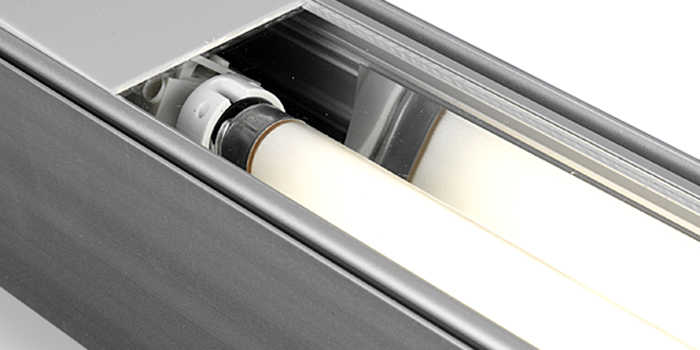
Extrusion
Extrusion is a process that can be done with both aluminium and plastic. The method is cost-effective and provides options for integrating functions and fine detail.
It is possible to combine extruded plastic and aluminium parts.
Extrusion of aluminium
The material, which at the start is called bloom, is heated and moulded at great force through a profile tool. Depending on the size of the profile and capacity of the machine, it may be necessary or desirable to manufacture several profiles at the same time. However a single profile is more usual.
Following moulding the profile is stretched, causing it to straighten. The material is then tempered in a furnace; in this state, the profiles are normally a good 6 metres in length. Cross-cutting, shaping and anodising are additional processes that can be performed if required.
Anodising involves adding a protective oxide layer to the surface using an electrolytic process that provides a hard, sealed surface. Natural anodising is most common and various different colours can be introduced.
Extrusion of plastic
The materials PC and PMMA are the most frequently used plastics in the lighting industry and are mainly used in a transparent form for shades and covers. The process allows the cost-effective production of parts in long designs and with a high degree of precision. It is also possible to combine materials to produce clear and opal surfaces, or to combine the strength of polycarbonate with the good UV resistance of acrylic.
The parts expand as they become warmer, so this must be taken into consideration when developing new products. Cross-cutting tolerances on shades should allow for tolerances of other parts they are to be used with. This, as standard, can result in gaps being visible at the ends of luminaires.